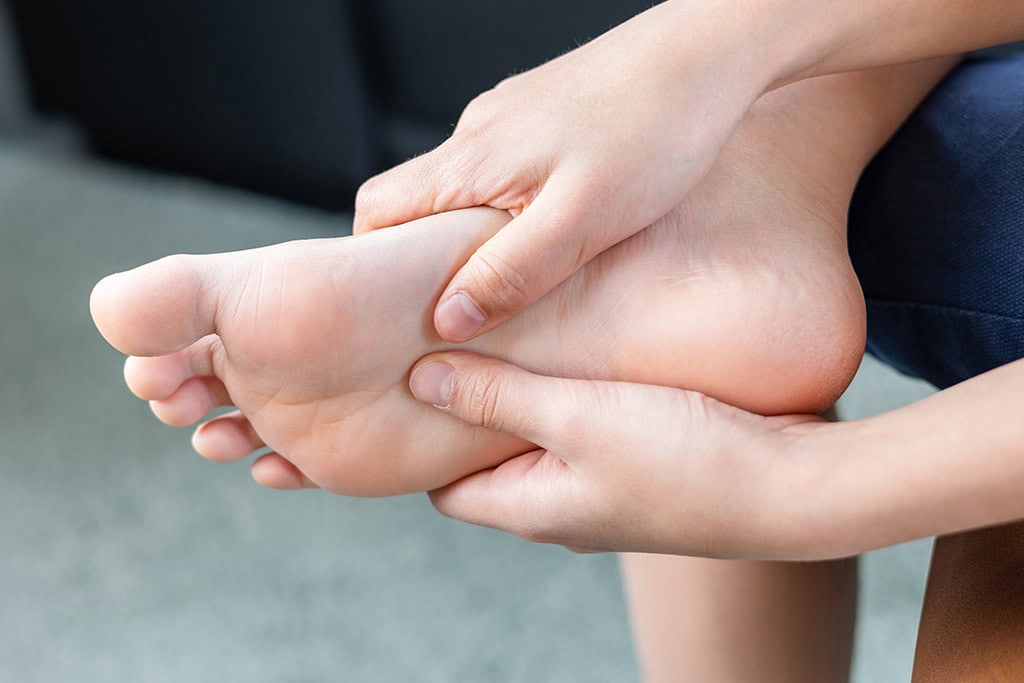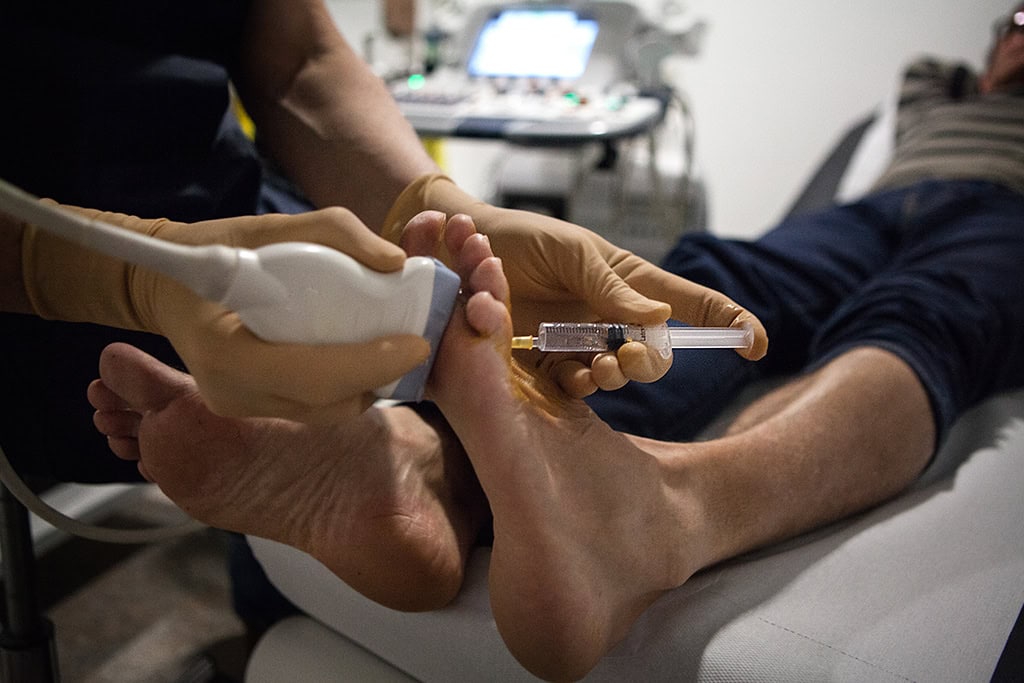Neuroma (Morton’s Neuroma)
What is a Neuroma?
A neuroma is a thickening of the nerve tissue in the foot caused by irritation, compression, or injury. The most common type is Morton’s neuroma, which affects the nerve between the 3rd and 4th toes. Although it’s often referred to as a tumor, it’s not cancerous, just a swollen or inflamed nerve that can be very uncomfortable if left untreated.

Causes & Risk Factors
Neuromas form from repeated stress or pressure on the nerve. Contributing factors include:
- Wearing tight, narrow, or high-heeled shoes
- High-impact activities like running, tennis, or dancing
- Foot structure issues like flat feet, high arches, or bunions
- Previous trauma to the forefoot
- Prolonged standing or walking on hard surfaces
These can compress or irritate the nerve leading to inflammation and pain over time.
Symptoms
Symptoms of Morton’s neuroma often start gradually and may come and go at first. As the condition progresses symptoms may become more persistent. You may experience:
- Sharp, burning, or stabbing pain in the ball of the foot
- Tingling or numbness in the toes
- Feeling like you’re standing on a pebble or wrinkle in your sock
- Pain that gets worse with tight shoes or long periods of walking
- Relief when you take your shoes off or massage your foot
Don’t Wait on Foot Pain
Burning, tingling, or shooting pain in your forefoot shouldn’t be ignored. Early treatment leads to better outcomes. Book a consultation with Vale Foot and Ankle today and get back to walking without discomfort.
Diagnosis
Diagnosis is based on your symptoms and a physical exam. Your podiatrist may press on the area between your toes to reproduce the pain or clicking. Imaging tests like X-rays, ultrasound, or MRI may be used to rule out other causes of forefoot pain.

Non-Surgical Treatment Options
Most cases of Morton’s neuroma respond well to conservative treatment especially if caught early. These may include:
Switch to shoes with a wide toe box and supportive sole and you’ll feel the pressure off the nerve immediately.
Custom orthotics and metatarsal pads can redistribute the pressure and reduce nerve irritation.
Avoiding high-impact sports or reducing prolonged walking can help ease symptoms during flare-ups.
Applying ice and using NSAIDs can reduce inflammation and pain.
Steroid injections can provide temporary relief by reducing inflammation around the nerve.
Therapeutic exercises, stretching, and massage can help improve foot mechanics and reduce nerve stress.
Surgical Treatment
If symptoms persist after months of conservative care, surgery may be considered. Surgical options include:
Nerve Decompression – Releasing surrounding structures to relieve pressure on the nerve
Neurectomy – Removal of the affected nerve if it’s too damaged or severely enlarged
Surgery is usually done on an outpatient basis and most patients experience significant symptom relief after recovery. Some may experience numbness in the affected toes after surgery.

Prevention & Long-Term Care
To reduce the risk of neuroma or prevent recurrence:
- Wear supportive shoes with enough room in the toe box
- Avoid narrow or high-heeled shoes for long periods
- Use custom orthotics if recommended for your foot structure
- Take breaks during long periods of walking or standing
- Stretch and strengthen your feet regularly especially if you’re active
Why Choose Vale Podiatry?
At Vale Foot and Ankle we use a thorough and personalized approach to diagnose and treat Morton’s neuroma. From non-invasive therapies to surgical evaluation when necessary, our team prioritizes your long-term foot health, comfort, and mobility.
Latest Posts

Does Insurance Cover a Podiatrist Visit in Connecticut?
If you are dealing with foot pain or an ankle issue, the last thing you

Types of Ankle Sprains: Causes, Symptoms, and Recovery Tips
Of the many injuries we see, ankle sprains are perhaps the most common — especially

Tailor’s Bunion (Bunionette) Stages
A tailor’s bunion, also known as a bunionette, may seem like a small foot problem,
